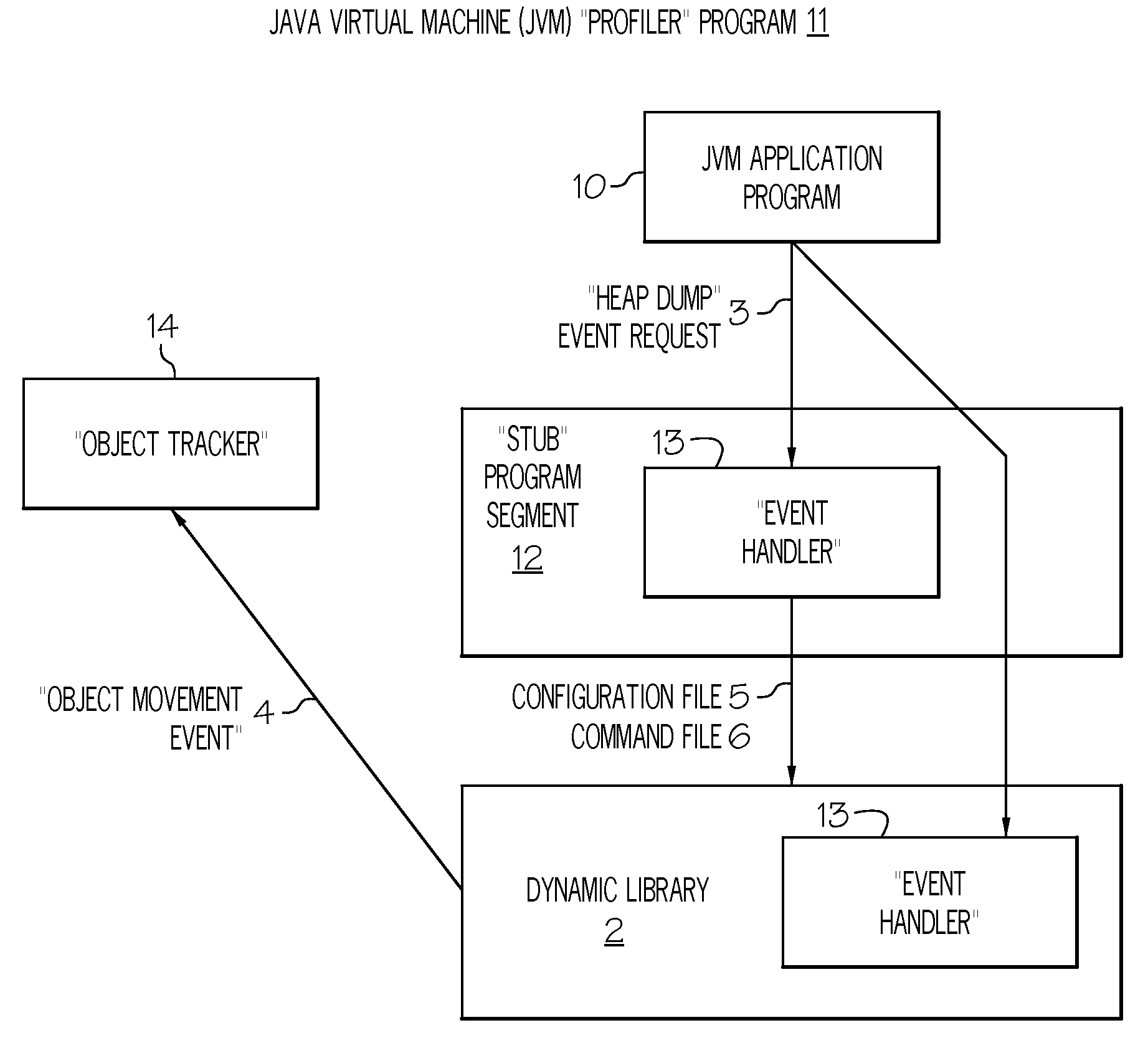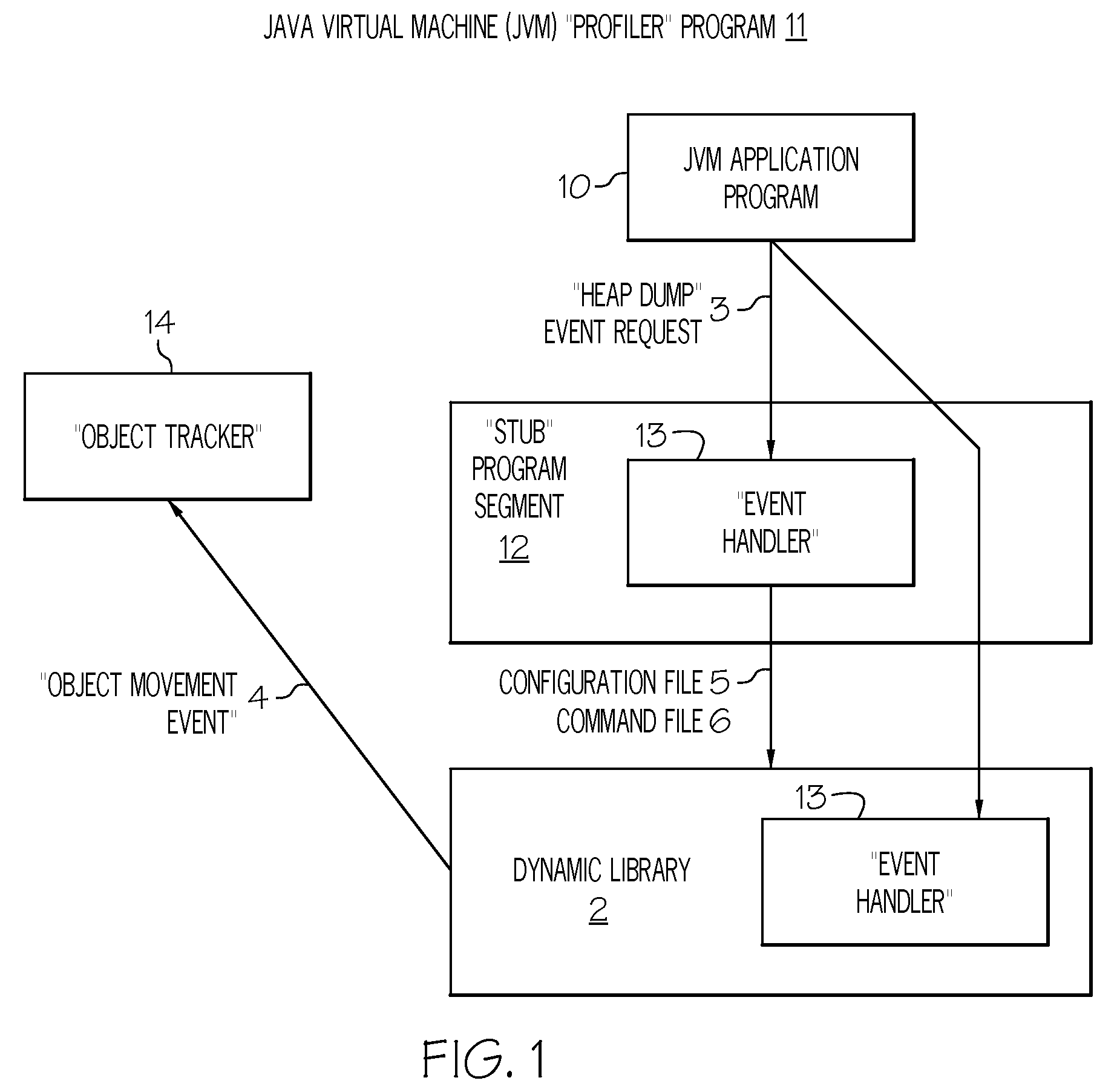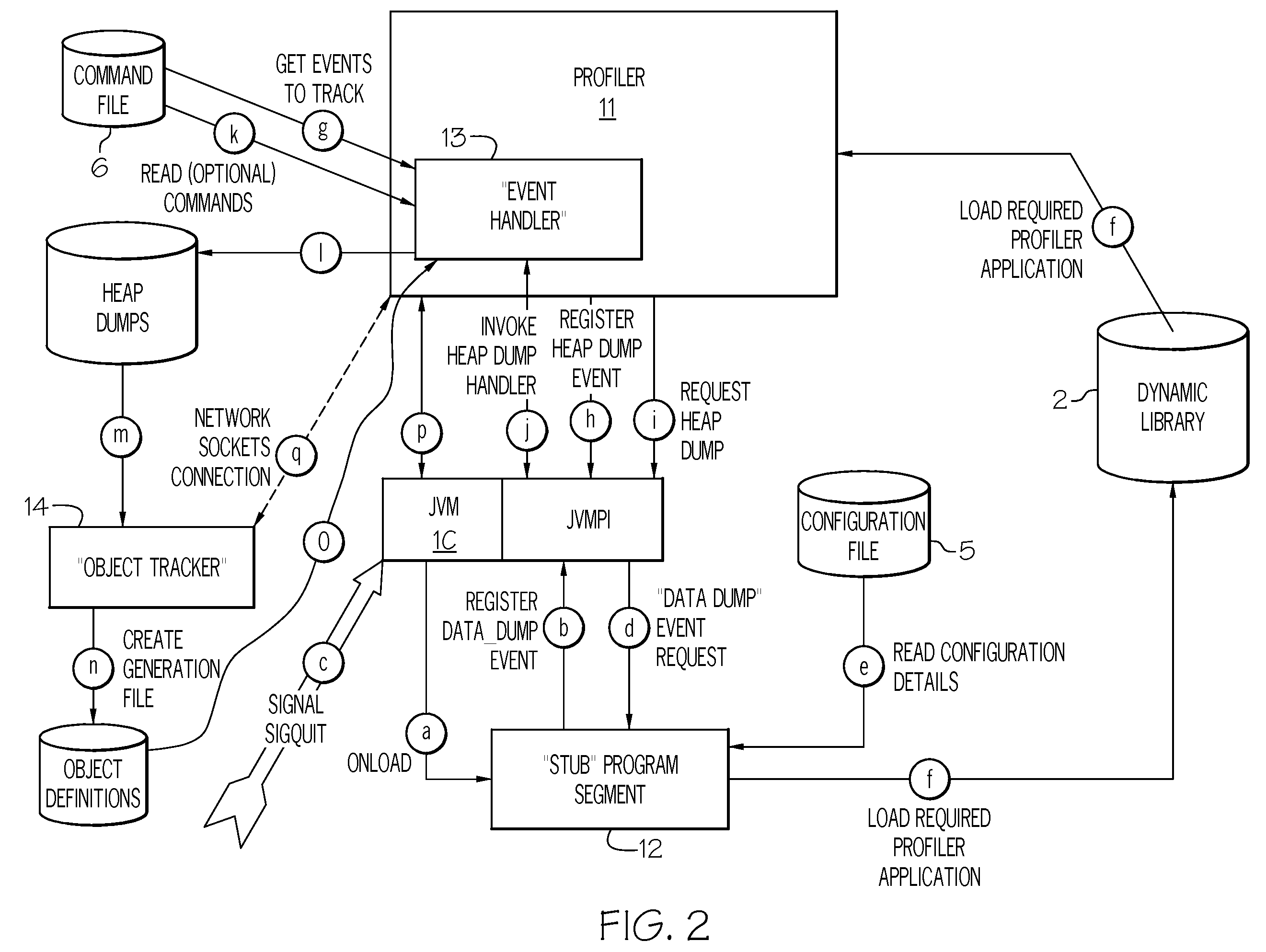Method and system for analyzing memory leaks occurring in JAVA virtual machine data storage heaps
a technology of java virtual machines and data storage heaps, applied in error detection/correction, instruments, computing, etc., can solve problems such as memory leaks, unanticipated accumulation of data objects in memory, and inability to allocate enough memory
- Summary
- Abstract
- Description
- Claims
- Application Information
AI Technical Summary
Problems solved by technology
Method used
Image
Examples
Embodiment Construction
[0012]Memory leak analysis is achieved through use of a combination of functions contained in a Java Virtual Machine (JVM) instruction compiler library acting in cooperation with functions packaged in the dynamically modifiable “profiler” program tool. As illustrated in FIG. 1 and in program processing steps “a” through “q” in FIG. 2, a preferred embodiment of the profiler 111 consists of a “stub” program segment 12 loaded by the JVM interface program 10 during initialization (to invoke its “JVM_OnLoad” function) which enables execution of the JVMPI_EVENT_DATA_DUMP_REQUEST (i.e., “heap dump event request”) 3 by associating it with an “event handler”13 that processes the registered event(s) when a SIGQUIT instruction is sent to the JVM program interface 10 to cause passing of the event request to the stub. The event handler 13 of the stub 12 reads the configuration file 5 of the heap dump event request 3 to determine the parameters (including the name and location of the dynamic libr...
PUM
 Login to View More
Login to View More Abstract
Description
Claims
Application Information
 Login to View More
Login to View More - R&D
- Intellectual Property
- Life Sciences
- Materials
- Tech Scout
- Unparalleled Data Quality
- Higher Quality Content
- 60% Fewer Hallucinations
Browse by: Latest US Patents, China's latest patents, Technical Efficacy Thesaurus, Application Domain, Technology Topic, Popular Technical Reports.
© 2025 PatSnap. All rights reserved.Legal|Privacy policy|Modern Slavery Act Transparency Statement|Sitemap|About US| Contact US: help@patsnap.com



